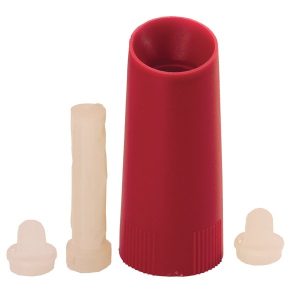ERMI Mold Testing
What is the ERMI?
The ERMI is an acronym for Environmental Relative Moldiness Index. It was developed by scientists at the USEPA to provide a straightforward, objective, and standardized way to obtain results for indoor air quality investigations.
- The EPA is developing an ERMI ranking system based on dust samples collected from homes across the U.S.
- The ERMI will help predict the moldiness of homes. Homes with high.ERMI values have a greater chance of having a mold problem then homes with a low ERMI.
- 36 different fungi make up the ERMI and are designed as Group I (those found in a typical, water damaged home) and Group II (those commonly found in all homes)
When is ERMI Testing Recommended?
So, as of recent, the EPA came out and is not recommending use of ERMI in homes or other buildings to determine the “health” of the building. ERMI has been peer reviewed for research purposes but has not been validated for non-research purposes. For this reason, EPA does not recommend the routine public use of ERMI in homes, schools, or other buildings.
What are the benefits of ERMI?
One of the benefits of ERMI testing is the technology used with the analysis versus regular mold sampling. ERMI uses PCR testing which identifies species of mold down to the cellular level. Regular mold sampling only gets to the genus level.
Example: ERMI mold test identifies Cladosporium sphaerospermum where a typical swab or air sample will only identify it as Cladosporium.
Many mold specialists in the field of health often recommend ERMI testing for their client’s homes due to its scientific nature. We are in the process of trying to educate the pros and cons of this type of test so our clients get what they need for answers. The best course of action is always a thorough inspection and moisture survey of the properly to identify areas of concern or active mold growth. ERMI testing can be used in conjunction with a thorough inspection however there are many limitations and improper ways to collect the samples that could skew the results. Fortunately, at Elite Mold Services, we have many testing options that can help answer health concerns.
What Molds are Included in ERMI Testing?
Group 1 – Water Damage Indicator Molds: Aspergillus flavus, Aspergillus fumigatus, Aspergillus niger, Aspergillus ochraceus, Aspergillus penicillioides, Aspergillus restrictus, Aspergillus sclerotiorum, Aspergillus sydowii, Aspergillus unguis, Aspergillus versicolor, Aureobasidium pullulans, Chaetomium globosum, Cladosporium sphaerospermum, Eurotium (Asp.) amstelodami, Paecilomyces variotii, Penicillium brevicompactum, Penicillium corylophilum, Penicillium crustosum, (Group 2) Penicillium purpurogenum, Penicillium spinulosum, Penicillium variabile, Scopulariopsis brevicaulis, Scopulariopsis chartarum, Stachybotrys chartarum, Trichoderma viride, Wallemia sebi
Group 2 – Common Indoor Molds: Acremonium strictum, Alternaria alternata, Aspergillus ustus, Cladosporium cladosporioides -1, Cladosporium cladosporioides -2, Cladosporium herbarum, Epicoccum nigrum, Mucor/Rhizopus, Penicillium chrysogenum-2, Rhizopus stolonifer
How Do You Collect an ERMI Test?
If we are performing an ERMI test for a client, a dust collector nozzle will be used for the sampling of carpet in two main areas; typically the master bedroom and the family/living room. A specific area of the carpet (2 meters2) will be marked off and the nozzle will be attached to the end of a clean HEPA vacuum. The carpet will be repeatedly vacuumed over for 5 minutes in each area and then moved to the next room. This sample will then be shipped to the lab for MSQ-PCR testing and a report will be issued with the results. We do not typically recommend testing for ERMI with a Swiffer or dusting cloth as some other laboratories use. The vacuum method is the only way the EPA conducted the testing during their analysis of this technology so we try to adhere to this collection method as well.
If you have any further questions or would like to speak with us about ERMI testing, please contact us today!


Ready To Get Started?
Have Questions? We’re just a click or phone call away!

